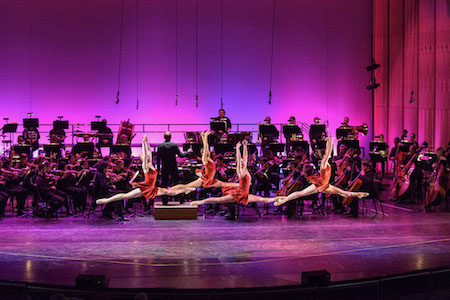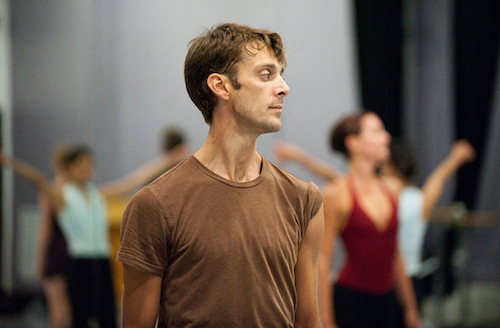by Jarrett Hoffman

That was the idea discussed a year ago, director-to-director, between the Akron Symphony’s Christopher Wilkins and Neos Dance Theatre’s Robert Wesner. After Wesner took some time to immerse himself in Petrushka, making sure the fit was right for his company, he said ‘yes’ to Wilkins’ challenge, kickstarting a collaboration that will culminate in a performance this Friday, February 9 at 8:00 pm at the University of Akron’s E.J. Thomas Hall.
Wilkins will lead the ASO, Neos Dance Theatre, and a large contingent from UA’s Dance Institute in Stravinsky’s Petrushka, with original choreography by Wesner. Soloists include Matthew Roberts, Kaleb Reilly, Brooke Wesner, Mary-Elizabeth Fenn, Carson Sandiford-Hoxie, Juliana Freude, and Anna Trumbo.
The program will open with Hector Berlioz’s Roman Carnival Overture, followed by Nino Rota’s La Strada, from the eponymous 1954 film by Federico Fellini. Early arrivers can hear Wilkins’ Preview from the Podium at 7:00 pm, and those looking for post-concert fun can head to the After Party at Jilly’s Music Room for drink specials and live music.
Co-founder as well as director of Neos Dance Theatre, Wesner spoke to us by phone, and he began by discussing the rehearsal process in the dance studio.
Robert Wesner: We had a couple of workshops back in the fall to get the movement vocabulary down, but my main time with the dancers has been over the past six weeks. We’ve been talking about grabbing notes — creating movement that’s like reaching out for something. I believe that the audience will see that imagery — that we are taking sounds, putting them in our pocket, walking a little further down the road, and then pulling them out again.
Jarrett Hoffman: Tell me about your core vision for this project.
RW: I wanted to strip away any pomp or circumstance, from costuming and movement to characterization. After grinding that all up and making a pulp out of it, I came out with the essential oils of who these characters are.
JH: And how ‘do’ you see those characters?
RW: Petrushka is so free of hypocrisy, so honest in who he is. He’s unable to hide his fear, sadness, jealousy, rage, happiness, or excitement, and some people would rather not deal with that type of brutal, raw truth. Other characters will still be highlighted in the mix — going back to that pulp analogy, there are still some meatier pieces — but they’ll reflect the highlighted characterization I’ve extracted.
When the puppets go into their chambers, we see that they aren’t just performing puppets, but they also have emotions and thoughts — good, bad, ugly, or otherwise. Inside the chambers is where we really grow in our sympathies for Petrushka.
JH: How does your production approach the ending?
RW: After the Moor kills Petrushka, we’ve left things intentionally vague in some ways so that the audience can leave thinking about who the Wizard and Petrushka really are. Does man turn into puppet? Does puppet turn into man? In our staging we’ve left the questions about how the characters reflect humanity unanswered.
JH: Can you describe the feeling within the company as this project comes to a close?
RW: I have to tell you, the connection we’ve built with what we’re doing in this ballet has come as such a great surprise. We’ve done full-length and story ballets and created work about particular issues in the past, but this one has sparked such a thoughtful and at times emotional process for us all. It’s been rewarding and satisfying for all the artists that comprise Neos Dance Theater.
Published on ClevelandClassical.com February 5, 2018.
Click here for a printable copy of this article




